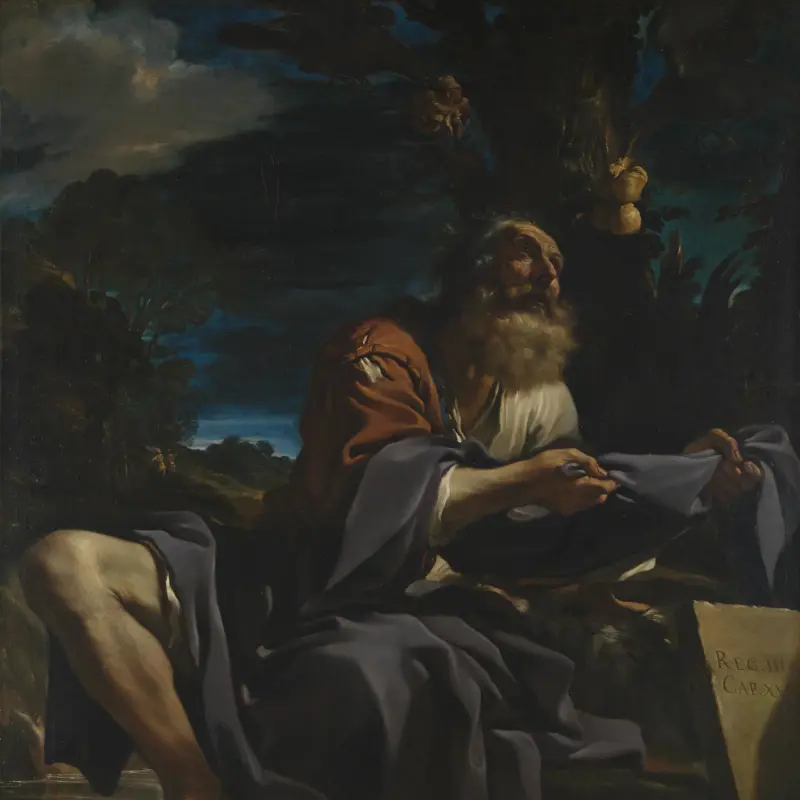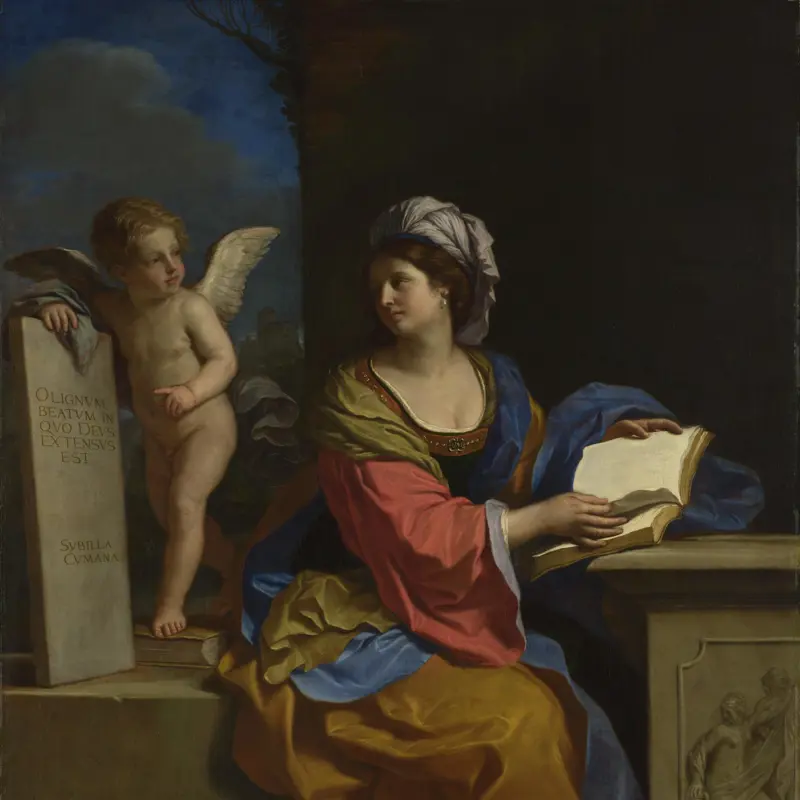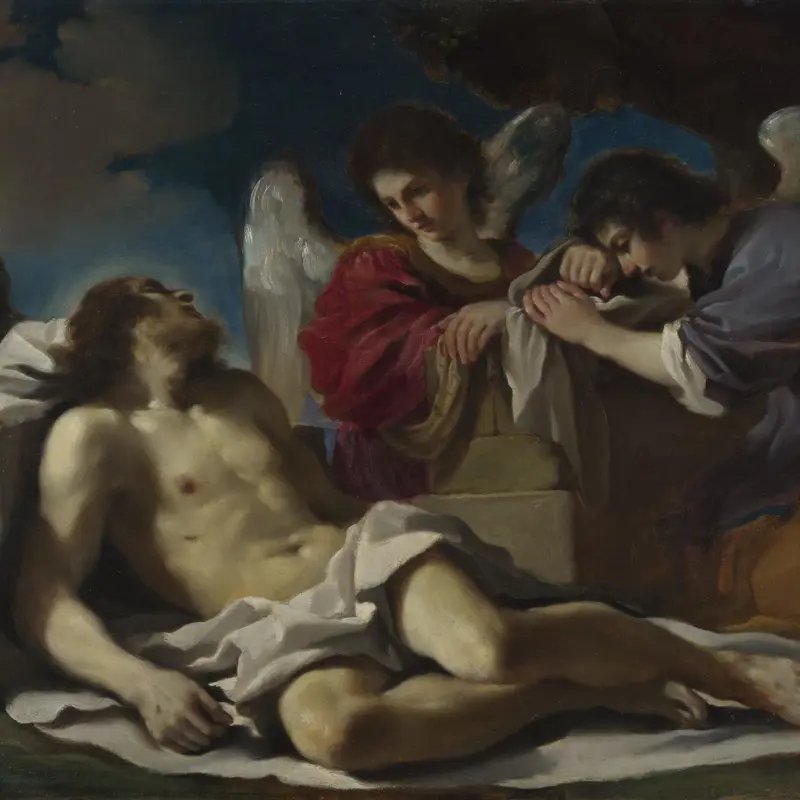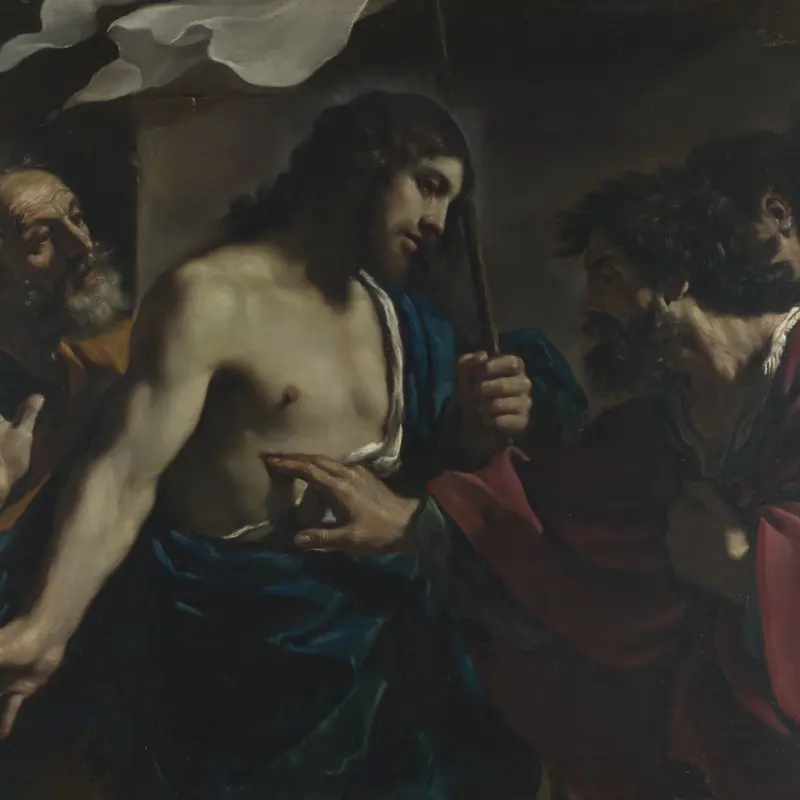Giovanni Francesco Barbieri was called Guercino in reference to his pronounced squint. He was the leading Bolognese painter after the death of Guido Reni. His earlier pictures typically combine the chiaroscuro effects of Caravaggio with a charm and softness not usually found in followers of this artist.
Guercino was born at Cento, near Bologna. He was largely self-taught but influenced by the Carracci and particularly by Ludovico Carracci. An early commission in Bologna was the altarpiece of the 'Investiture of Saint William' (1620, Bologna, Pinacoteca). In 1621 Guercino was invited to Rome to work for Pope Gregory XV. His ceiling fresco, Aurora, was painted for the Pope's nephew (Rome, Villa Ludovisi).
On the death of the Pope, Guercino returned to Cento; he settled in Bologna, probably in 1644, after the death of Reni. His later work is more academic, closer to the manner of Reni, and lacks the bravura handling and chiaroscuro effects of his earlier paintings.
Guercino
1591 - 1666
Works by Guercino
(Showing 6 of 10 works)
The monumental figure in this painting is Elijah, an Old Testament prophet who lived in Israel in the ninth century BC. Having predicted that a terrible drought would ravage the land, Elijah was instructed by God to hide by the stream Cherith. Here, ravens delivered bread and meat to him every mo...
King David was a biblical warrior king and musician, who is credited with writing several Psalms in the Old Testament. Here, David is not young but not yet old. He looks at a tablet inscribed with a line from a Psalm: ‘Glorious things of thee are spoken, O City of God’ (GLORIOSA / DICTA SVNT / DE...
This altarpiece commemorates one of the most important events of the papacy of Pope Gregory XV (born Alessandro Ludovisi). It shows the Jesuits Ignatius Loyola and Francis Xavier being canonised (officially declared saints in the Roman Catholic Church). This occurred on 12 March 1622, the feast d...
The story of Hagar and Ishmael is told in the Old Testament Book of Genesis. Unable to have a child with his wife, Sara, Abraham has a son called Ishmael by her Egyptian maidservant, Hagar. When the aged Sara miraculously conceives and gives birth to Isaac, she demands that Hagar and Ishmael are...
Not on display
The Cumaean Sibyl is one of 12 pagan sibyls, or prophetesses, said to have foretold the coming of Christ. The Cumaean Sibyl, who takes her name from Cumae near Naples, predicted that Christ would be born to a virgin mother in a stable at Bethlehem. The inscription on the stone slab here refers to...
This small painting depicts a solemn religious scene. Two angels kneel in quiet contemplation next to Christ, whose body has been taken down from the Cross following his crucifixion. While the Gospels make no mention of angels alongside the dead Christ, two are said to have been present at his to...
The New Testament recounts how, after his crucifixion, Christ rose from the dead and appeared to his disciples. One of them, Thomas, was absent, and refused to believe in Christ’s resurrection without witnessing it himself. This painting shows their encounter, when Christ instructed Thomas to tou...
Forty days after his birth, Mary and Joseph brought the infant Christ to the Temple in Jerusalem. According to Jewish custom, all first-born male children were to be taken to the Temple to be presented to God in a ceremony that involved the sacrifice of two doves or pigeons, visible here at the f...
The Samian Sibyl was one of 12 pagan sibyls (or priestesses) who, like the Old Testament prophets, were said to have foretold the coming of Christ. The Samian Sibyl, named after the Greek island of Samos, was an oracle of Apollo and prophesied that Christ would be born to a virgin mother, as the...
After Guercino
The figure in this painting is copied from one of the elders in the foreground of Guercino’s Susannah and the Elders (Museo del Prado, Madrid), which illustrates a story in the Old Testament Apocrypha. While she is bathing, Susannah is spied upon by two old men who threaten to accuse her of adult...
Not on display
You've viewed 6 of 10 works










